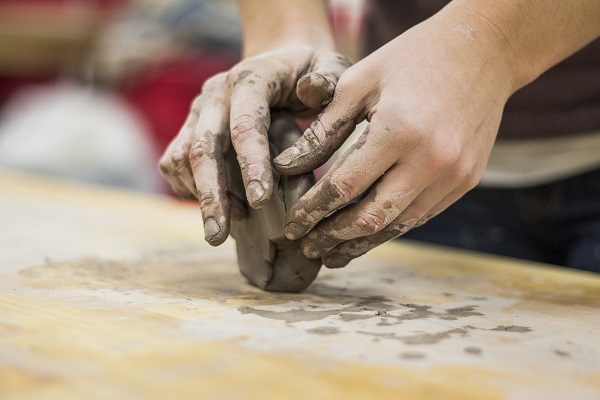In its simplest terms, art therapy is what it sounds like: the use of creative arts for therapeutic purposes such as addressing mental and physical health concerns. However, this basic definition doesn’t encompass all that an art therapist is or all that he or she does. Art therapists are psychotherapeutic relationship builders, experts in selecting artistic activities and media and clinical practitioners who share many job duties with other types of therapists, counselors and healthcare providers.
Develop a Psychotherapeutic Relationship With Clients
A therapeutic intervention only works if the client or patient is engaged in the effort. As in other forms of counseling and therapy, clients must feel safe, listened to and understood if they are to open up about the issues for which they are seeking help. If they don’t believe that the therapist understands their needs and fears or has their best interests in mind, they will be unlikely to listen to the therapist’s insights and suggestions, which will prevent them from making progress. This is particularly true for art therapy, which requires the client to do a lot of hands-on work.
All application of art therapy clinical practices takes place within this psychotherapeutic relationship, the American Art Therapy Association reported.
How exactly does an art therapist go about creating this productive psychotherapeutic relationship? There are many factors that influence the therapeutic relationship, some specific to art therapy and others applicable to all kinds of therapy. Being attentive and present in the moment with the client, utilizing active listening techniques and conveying understanding, empathy and compassion through words and body language are all steps toward building a sense of trust. In the field of art therapy, especially, therapists can use visualization skills or take visualization a step further as they gently encourage clients to draw their own safe spaces that they can visit mentally when stressed or anxious.
One element that is especially important in developing a healthy client-therapist relationship is attunement, according to Psychology Today. Attunement, which refers to the manner in which the therapist responds to the client’s emotions, encompasses everything from your presence to your facial expressions and body gestures.
Many people are self-conscious of their skills, or lack thereof, in the visual arts. This reality may pose an additional obstacle that art therapists must overcome by building a trusting relationship and a safe space for clients to create art without judgment.
IMAGE SOURCE: Pixabay, public domain
Use Knowledge of Art Media and Processes for Interventions
What distinguishes art therapy as a clinical practice from clients simply sitting down to draw or paint on their own is primarily the significance of the art therapist as a guide. The client may be open to using non-verbal communication methods like art to express their feelings, elevate their mood or explore ways to reframe and solve their problems, but it’s likely that he or she doesn’t know where to start.
An art therapist can choose a prompt or task that fits the individual client’s needs. Rather than just telling a client to create “something,” the art therapist can guide the efforts by asking the person to create an image of what they want, fear, hope for or remember. Although art therapy is considered non-verbal in the sense of exploring feelings and problems with images instead of talk therapy, art therapists should be able to talk with clients about their work – not the artistic quality of it, but rather, the symbolism and meaning of it.
Art therapists must put some thought into choosing the medium of art to be used for a client or a specific task. Some media, like clay, are grounding, while others, like oil paint, are more expressive and cathartic.
Maintain Paperwork and Other Professional Obligations
The time you spend actually making art with clients will likely be your favorite part of the job, but there are many other tasks an art therapist must do. Like other types of counselors and therapists in clinical practice, you have other job duties to perform. Other crucial tasks include conducting assessments, developing treatment plans, recording progress and summary notes, handling billing and insurance matters and keeping abreast of new techniques in the field, according to the United States Bureau of Labor Statistics (BLS).
Art therapists don’t use assessments to reach a formal diagnosis from the Diagnostic and Statistical Manual of Mental Disorders (DSM), like psychologists do, but they can develop a diagnosis in the context of the art therapy field, according to Frontiers in Psychology.
Additional Resources

